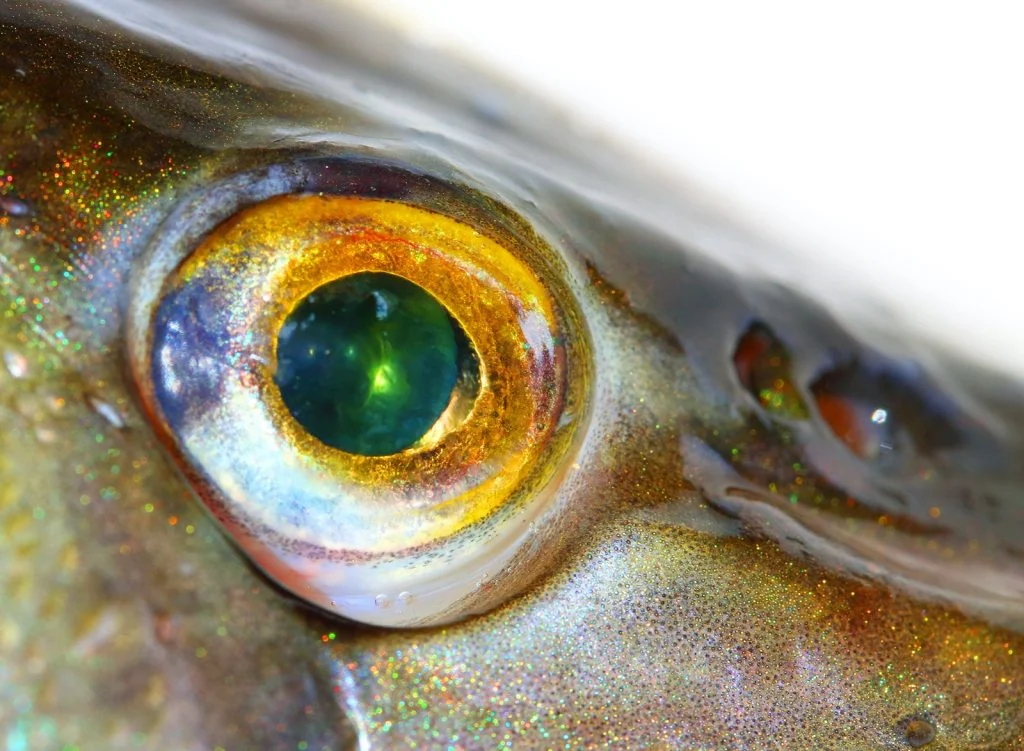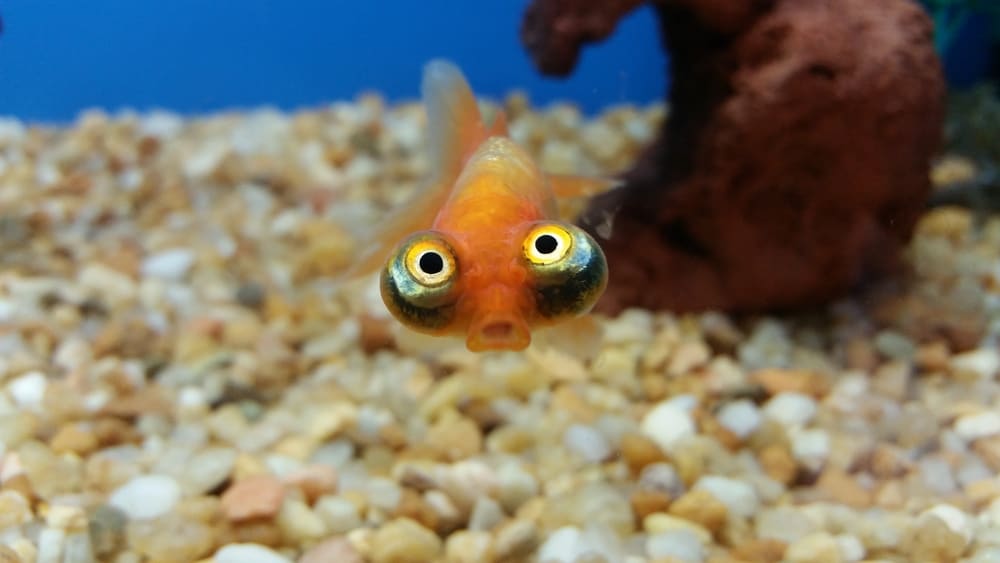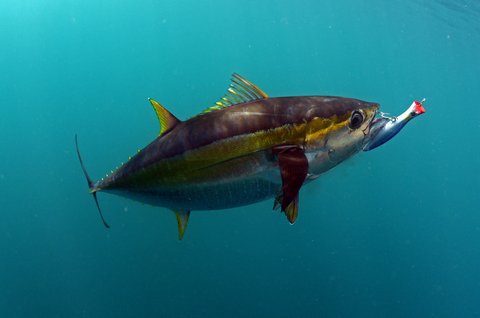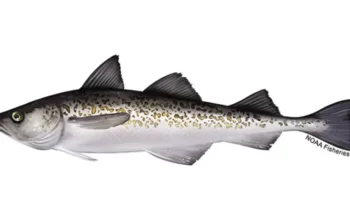Our eyes are completely different from fish eyes. They see a different spectrum and polarization, which makes them see different colors than we see. Specifically, do the fish see the color? YES! If so, do they see color as we do? As anglers, it is important to understand what they can see in the water and what they tend to look for so we can present the right flight in the right way at the right time.
Table of Contents
Are Fish Eyes Different Than Ours?

Fisheyes were found to be both similar and different from human eyes, suggesting that they are not much different from us.
For example, fish eyes tend to be on the side, while human eyes are on the front, presenting binocular vision. This changes the perceived depth at which the fish are disadvantaged. That’s why when they feed on algae near rocks or anywhere else, they’re close enough to not get too far. Those who like to fish know this secret.
Likewise, human pupils dilate, but do fish pupils dilate? Most fish have fixed pupils, while some fish, such as sharks, have developing pupils.
Color Changes Underwater
Color perception is different underwater. Its composition is different from air, preventing certain wavelengths of light from passing through it as if it were air. For example, the red you see on the water looks slightly different than the red you see underwater.
Also, the deeper you go into the water column, the color changes. At a depth of 10 feet, about 60 percent of light is reflected or absorbed by water. At 33 feet, almost 85% of the total light is reflected or absorbed. The deeper you go, the only wavelengths of light that can penetrate are deep blacks, grays, and blues. Most fly anglers don’t fish at 33 feet, but that orange furry guy will start to gray at that depth. Color perception is different underwater. Its composition is different from air, preventing certain wavelengths of light from passing through it as if it were air. For example, the red you see on the water looks slightly different than the red you see underwater.
Also, the deeper you go into the water column, the color changes. At a depth of 10 feet, about 60 percent of light is reflected or absorbed by water. At 33 feet, almost 85% of the total light is reflected or absorbed. The deeper you go, the only wavelengths of light that can penetrate are deep blacks, grays, and blues. Most fly anglers don’t fish at 33 feet, but that orange furry guy will start to gray at that depth.
What Colors Do Fish See?
In order to see color, there are color detectors behind the retina of the eye, such as the cones that must be present. Humans have three different types of cone cells called red, green, and blue. On the other hand, some fish have red, green, blue, and ultraviolet.
Because fish have an extra cone in their eye, they can see more colors than humans. This includes all the colors of the rainbow and even more colors across the entire spectrum.
Depending on their location in the ocean, they can see tons of colors. In the sunniest places, fish on the water have this ability.
Let’s not forget deep-sea fish, where colors are rare. Surprisingly, fish in the depths of the ocean can see colors, but not in the same way we thought.
What Do Fish See?

In many cases, fish rely on other senses than vision, but what they see is very specific to what they need to see. Freshwater and saltwater fish are good examples. Scientists studied both conditions and found that freshwater fish saw better than saltwater fish.
Because saltwater fish often cruise in wide open waters, they need to use their senses, such as smell or vibrations in the water, to cruise long distances. Their vision comes in handy only when they are near prey or food sources, where they use their vision to see slight color differences between the background and target. That’s why the saltwater guide will tell you to put the fly in front of the redfish’s mouth or they’ll miss it.
Alternatively, freshwater fish have better underwater vision than saltwater fish. They need to track food and sense predators in dirty, murky water and dim light, so they’ve adapted to do so. This is why largemouth bass or musk may cover 10-20 feet to lock out flies or bait. But regardless of the environment, it’s best to keep in mind that fish hone their movement and sense of smell first, and then use vision as a final test before making up their minds.
Fish Have Good Eyesight for Their Environment
Of course, fish are different from humans, but that doesn’t mean they can’t see clearly. Fish have enough eyesight to survive.
Unfortunately, fish tend to be myopic creatures with poor farsightedness. Placing the eyes on the sides of the head can also create semi-blind spots, making them vulnerable to danger or being caught by fishermen. However, fish have better peripheral vision because the circular lens protrudes forward, making a difference when moving away from predators.
Now, fish brains are indeed smaller than many other creatures’ brains. For example, they may not be able to process what they see visually in the same way humans do. Does this mean they have poor eyesight? of course not.
As far as their abilities are concerned, they can see through muddy waters enough to differentiate what they perceive. Still, depending on the fish, they can confuse predators that are part of the colony and suffer tragic deaths, as you can see while watching the Nature documentary.
Despite these shortcomings, fish have better underwater vision than humans and can see more colors if they live on the surface of the ocean.
Final Thoughts
As mentioned earlier, fish exposed to sunlight will see different wavelengths of color, especially if they have cones that can see those colors. Usually, fish that live on the water do have these cones in their eyes. Deep-sea fish do not have the same ability due to lack of sunlight, but they can see different colors to help survive.
Simply put, it depends on the visibility, location, and species of the fish. Most fish are not color blind, although it depends on how much light is available. What does it mean? At night, due to the absence of light, the color cones in their eyes shrink, which means surface fish are colorblind only at night.
Fish that live in sunny water can see color. At night, even with light from the moon, they are colorblind, but only when the light visibility is minimal.




